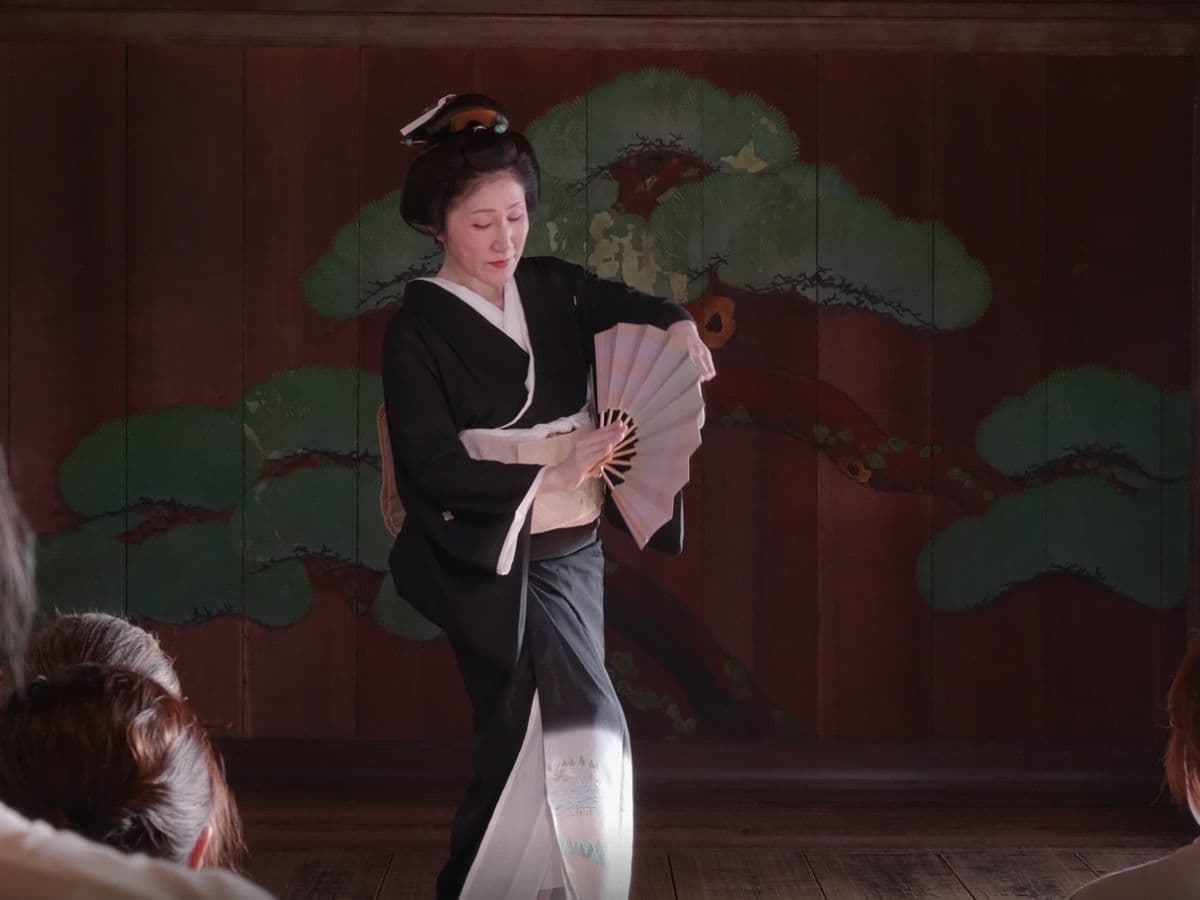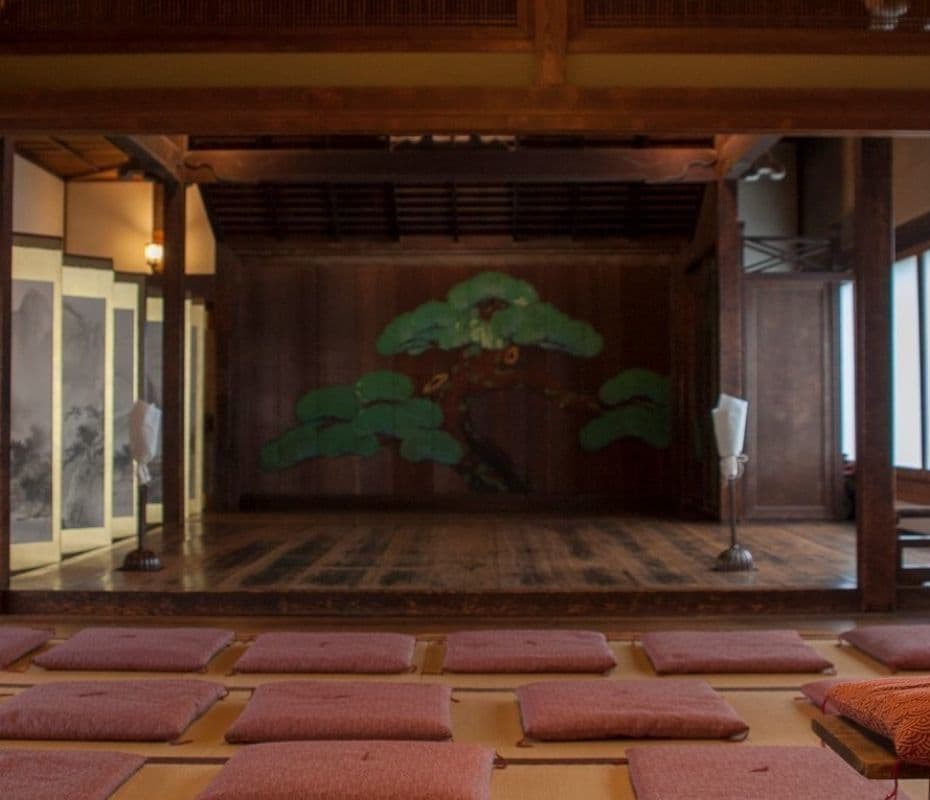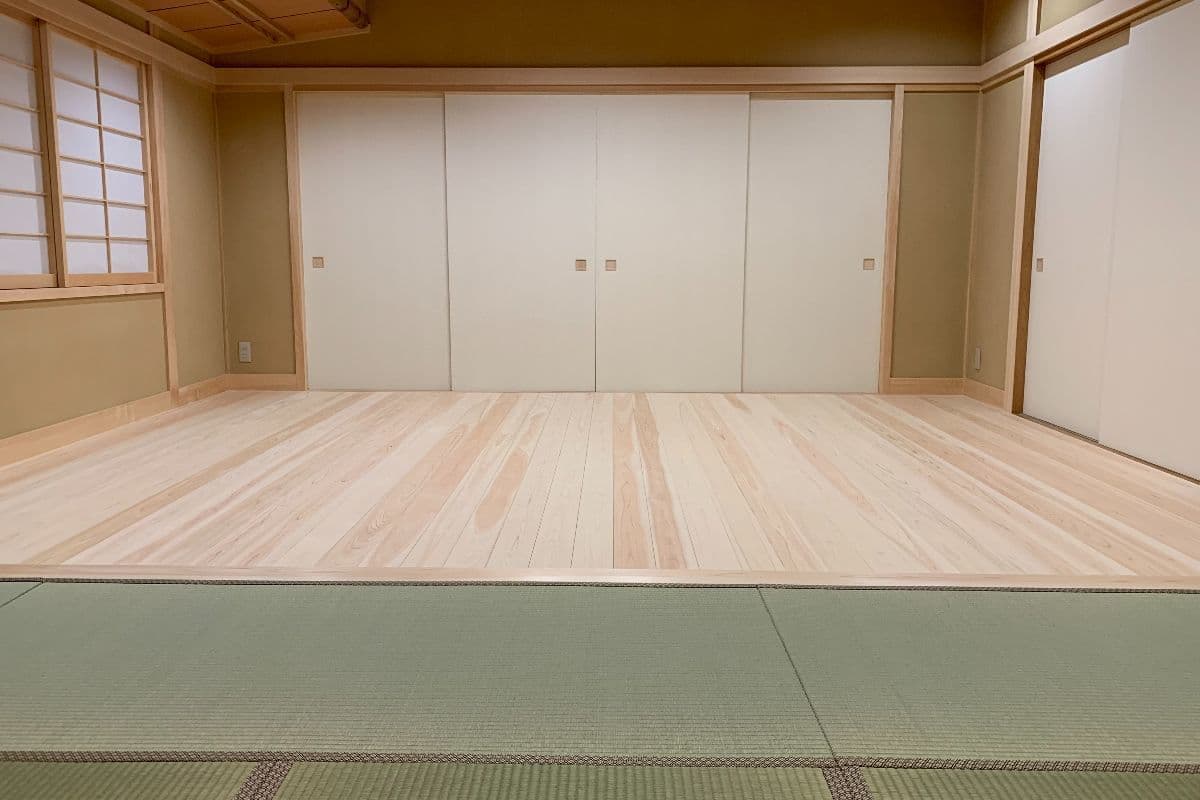伝統芸能
Our philosophy

Dancing in tatami room
The feeling what the Japanese focusing for a long period
The era in which the choreography was made - Aiming to approach the original choreography which was created in Edo and Meiji Period.
Pursuing the essence of tradition
Originally Zashikimai (Jiutamai and Kamigatamai) was performed in a tatami room. So we do not have any particular preference of performing place like a theater.
I think the essence of Japanese culture lies in the ambiguity of boundaries. It could be described flexibility by another word.
For example, difficulty of drawing a line of inside and outside separate line at Japanese style porch, Engawa, a Japanese-style room that can be used as both a guest room or a bedroom, and even a view of life and death.
Of course, the lyrics and choreography of the dance are based on this sensibility, and the atmosphere that exists between the dancer and the audience as they move between inside and outside of themselves is also an important element. I think a tatami room is a place where you can share that dense atmosphere more than anywhere else.
You could discover the significance of contacting old Japanese culture through Jiutamai feeling the sound of breathing, the sound of silk, rustling, the feeling of vague eyes under natural light and the echo sound sink to your body in the space made by wood and paper.

Universal Expression and "Dancing Zen"
Dance is not only playing a role, but about dancing the dancer's "mental landscape" with lyrics like "mutterings". Therefore, even with the same song, the atmosphere created by each dancer is different depending on the dancer's personality and life experience, and it has a deep aspect in that it gives a completely different impression.
For the audience, if you have prior knowledge, it will be even more enjoyable, and even if you don't have any knowledge, you can feel what you see, which is the best part of watching dance. It can be enjoyed by anyone, beyond words and time.
And for the dancer, it is also a way to improve themselves. More than a hundred years ago, dance was not only performed by Geisha, who were professionals who entertained customers, but also by the children of upper class society, who danced as a way to "improve themselves". Since dance is a way of dancing "mental landscape", the dancer's emotions and even humanity are revealed. There are things that can only be seen by practicing to dance without thinking and exposing that dance to others. Asking yourself about has a dialogue with yourself. It is a form of training that could be called "dancing Zen." By doing so, we hope to enrich our minds and live with a calm mind, and we have decided to use dancing as one of the training methods for this "path(michi)".
To pass on to the next generation
Many tangible cultural properties in Japan are made of wood, a material that easily deteriorates, so restoring them is difficult. The most important thing is to consider what to keep and how to make new, and I hear that half of the restoration process is spent on this consideration.
Mai-dance is the same. In some cases, it can be said to be even more delicate because it disappers without trace.
If we do not carefully consider how to accept changes that come with the times, the figure will certainly remain, but the core charm of the thing may become diluted.
If we do not make an effort to carefully consider what can be changed and what cannot be changed, we will lose sight of the original charm.
Originally, Mai was performed without wearing costumes for the role. Zashiki-mai is characterized by detailed expression in a dense atmosphere in a small Zashiki room, so I think it is important to dance with simple preparations and without lighting so that the content of the dance can be more clearly brought out.
It is also important to change the stereotype that rehearsals and performances cost a lot of money, and to create many opportunities for many people to know and learn about Mai.
I believe that Mai performed in zashiki (tatami rooms) is more familiar, more delicate, and more natural than in theater.
I think there is still a charm that we have not yet noticed.
It has a charm that has captured the hearts of so many people, and that is why it is still accessible to us today.
I will work hard to preserve it for the next generation.
